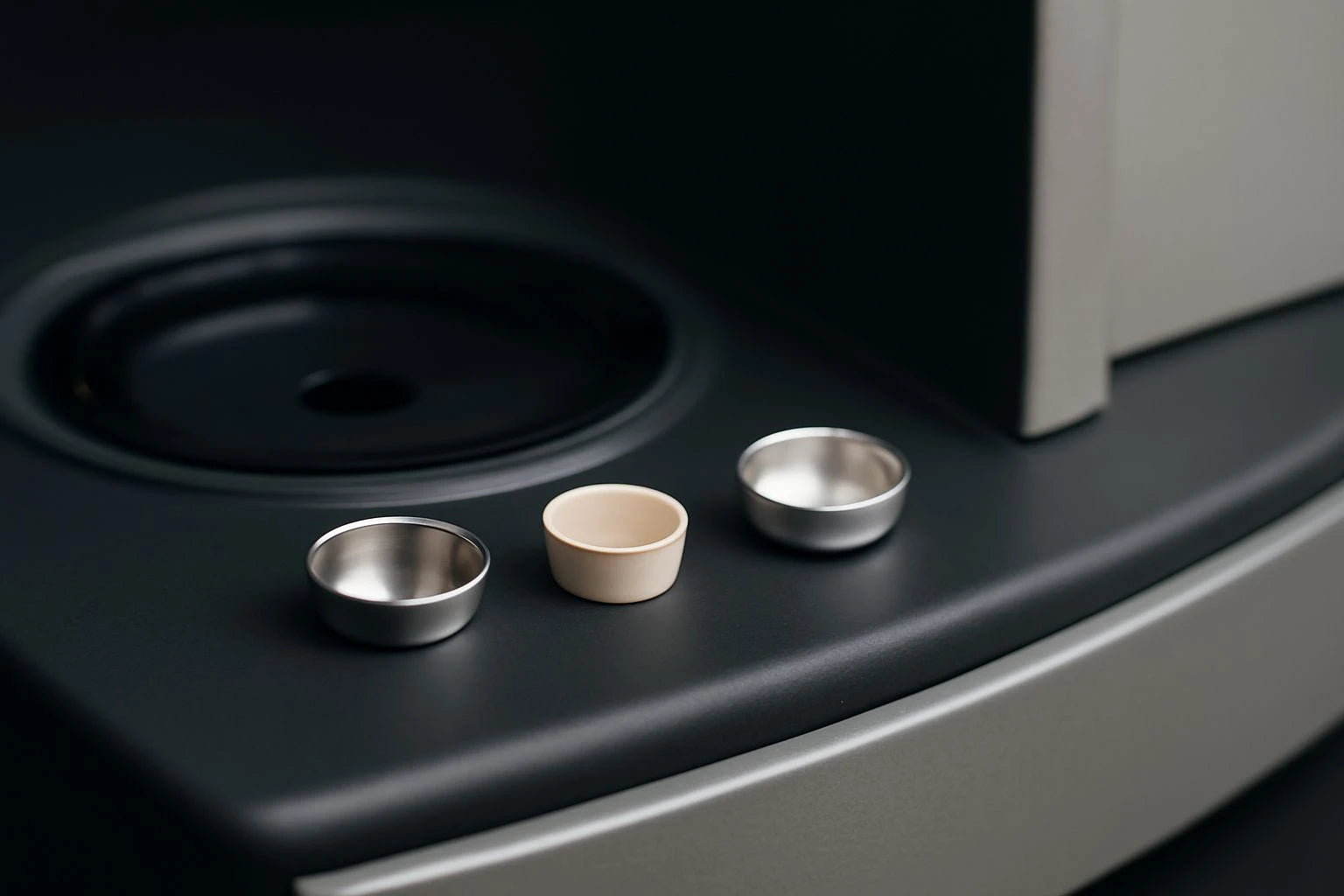Choosing the right DSC sample pan is crucial for accurate thermal analysis results. It ensures reliable data and can significantly affect the outcome of your experiment.
In this article, we will help you identify which DSC sample pan suits your specific laboratory needs, whether you're working with high temperatures, delicate materials, battery research, or high-precision environments.

Which DSC Sample Pan is Ideal for High-Temperature Thermal Analysis?
High-temperature applications require pans that can withstand extreme conditions without degradation. These pans must resist thermal expansion and chemical reactions at elevated temperatures. Learn more about thermal expansion.
For metal or ceramic testing, platinum and ceramic DSC pans are ideal. These materials can endure high temperatures and ensure consistent performance during experiments.
Choosing the correct pan for high-temperature analysis can significantly improve your data accuracy. Platinum pans, for instance, have excellent thermal conductivity, ensuring accurate heat flow during tests. Learn more about thermal conductivity.
| Material | Temperature Range | Durability | Applications |
|---|---|---|---|
| Platinum | Up to 1500°C | Highly durable, stable at high temperatures | Metal testing, ceramic analysis |
| Ceramic | Up to 1600°C | Resistant to high temperatures, non-reactive | High-temperature material testing |
What Type of DSC Sample Pan Should You Use for Delicate Materials?
When working with delicate materials, the right DSC sample pan ensures the preservation of the material’s integrity while providing accurate data. Learn more about delicate materials.
For sensitive materials, aluminum pans are often the best option. Aluminum is lightweight, non-reactive, and offers good thermal conductivity, making it ideal for precise testing without affecting the material.
Moreover, aluminum pans are easily available and are commonly used for standard thermal analysis in laboratory environments.
| Material | Advantages | Best For |
|---|---|---|
| Aluminum | Non-reactive, cost-effective, good thermal conductivity | Delicate materials like plastics, organic compounds |
How to Choose DSC Sample Pans for Battery Research?
In battery research, DSC pans need to offer resistance to chemical reactions and provide consistent heat transfer during testing. Learn more about lithium-ion batteries.
For this type of analysis, graphite or sapphire pans are preferred as they offer minimal chemical reactivity and can maintain stable heat flow. These pans ensure that the thermal behavior of the battery is accurately measured without introducing contaminants.
Choosing a high-quality pan for battery research can enhance the consistency of test results and prevent errors due to pan degradation.
| Material | Features | Best For |
|---|---|---|
| Graphite | Highly stable, good heat resistance, minimal chemical reactivity | Battery materials, lithium-ion cells |
| Sapphire | Excellent heat resistance, transparent to infrared | Battery analysis, fuel cells |
Which DSC Sample Pans Are Best for Use in High-Precision Laboratories?
High-precision laboratories demand the most reliable and consistent results. Therefore, selecting a DSC sample pan that maintains precision and ensures accuracy during tests is crucial. Learn more about precision.
For these applications, platinum and gold pans are often the best choice. These materials are stable, durable, and offer exceptional thermal conductivity, making them ideal for high-precision measurements.
Choosing the right pan ensures that the thermal behavior of the sample is measured with minimal error, allowing for accurate data interpretation in sensitive research.
| Material | Precision | Applications |
|---|---|---|
| Platinum | Excellent precision, minimal error in heat flow | High-precision research, academic studies |
| Gold | Superior heat conductivity, precise measurements | High-precision testing in laboratories |


Leave a comment